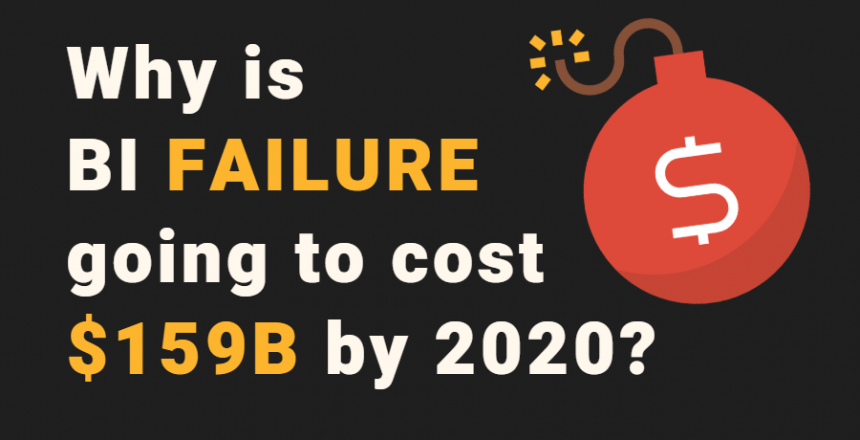As the need for organizations to gain insight from their data soars to an all-time necessity, many companies have spent millions of dollars trying to ensure successful business intelligence projects. With an average 70% failure rate, per Gartner, failed BI projects continue to be the scarlet letter of many IT and business departments across the world. After leading, scoping, and delivering 100’s of enterprise business intelligence initiatives globally, below are a few key lessons that I’ve learned.
1. New Technology is not the answer

New technology is not the answer. A better investment would be to add or upskill existing team members with soft side skills, empowering them to support the business on an emotional as well as on a logical level. This is where data storytelling comes in and why I created the ‘How to Master BI Data Storytelling in 30 days’ online course. It’s not enough to just develop charts, you need to create the story.
2. Dashboards are not Enough

In his article “How Artificial Intelligence is the New Business Intelligence”, Wadhwa boldly states that Dashboards are not enough. He rightfully argues that while human beings are limited to displaying single data points, AI can apply reasoning and provide insight on millions of data points at once, providing true insight. I’ve been preaching the need for dynamic data visualizations for the last eight years. Decision makers need dynamic visualizations that automatically update to reflect new insights in real-time, so they can stay ahead of their business. While dashboards are not enough, we are at least 1-2 generations away from eradicating gut analysis, which is one of the reasons why most business intelligence reports and dashboards have a 7-10% average user adoption, regardless of the tool, beauty, or investment.
At BI Brainz we have designed and deployed 100’s of dashboards for some of the world’s largest brands. Using our visual storyboards we work with users to create and understand their stories, then use data to bring these data stories to life. We see Artificial Intelligence as a way to keep our customers competitive.
3. BI Time to Value is too Slow

According to Information Week, Organizations struggle with time to value for BI due to unclear scopes, lack of skilled personnel, lack of prioritization, and data quality issues. In a recent TDWI survey, out of 224 data professionals, over 45% responded that they were ‘unsatisfied’ with the current time to value of their BI project. Whether it’s purchasing, implementing or scaling a solution, most BI teams are just too slow in meeting the business needs. Decision makers are forced to operate in the rear view, focusing on what happened vs. what is going to happen and how to prevent it. BI teams are plagued with dinosaur skillsets for legacy solutions that fail to attract the business user’s interest or investment. Unable to quickly learn and adapt new BI tools, has caused a large divide between the business and BI teams in many organizations. If you find your BI team in this situation, it’s a lose-lose situation. The business users will eventually bring in the tool they want, but when it’s time to scale it, they will either come back to the BI team for help or hire outside consultants.
Building my career as the go-to person for failing BI projects taught me a few key lessons. I saw first hand how undefined scopes, lack of executive buy-in, wrong resources, and data quality issues could derail multi-million dollar BI projects. Usually brought in as ‘the last resort,’ my first step was to always use my prep guide to confirm four things: the who (sponsors, business owners, IT resources), the why (Goal), the what (the top 5 KPIs), and the when (any hard deadlines). That’s why the prep guide is the first step of my popular BI Dashboard Formula methodology.
To Conclude

In the wake of the realities facing most organizations when it comes to using their data, I gave myself the challenge to create 1,000 Chief Data Storytellers within the next 365 days. Not only did I create a new private Facebook group to attract other data storytellers, but I also released a free training on ‘How to become the Chief Data Storyteller in your Organization’. If any of the above issues are your reality, then learning how to tell compelling data stories and appeal to the right side of your user’s brains may help to resolve a lot of these issues or at least explain it.






